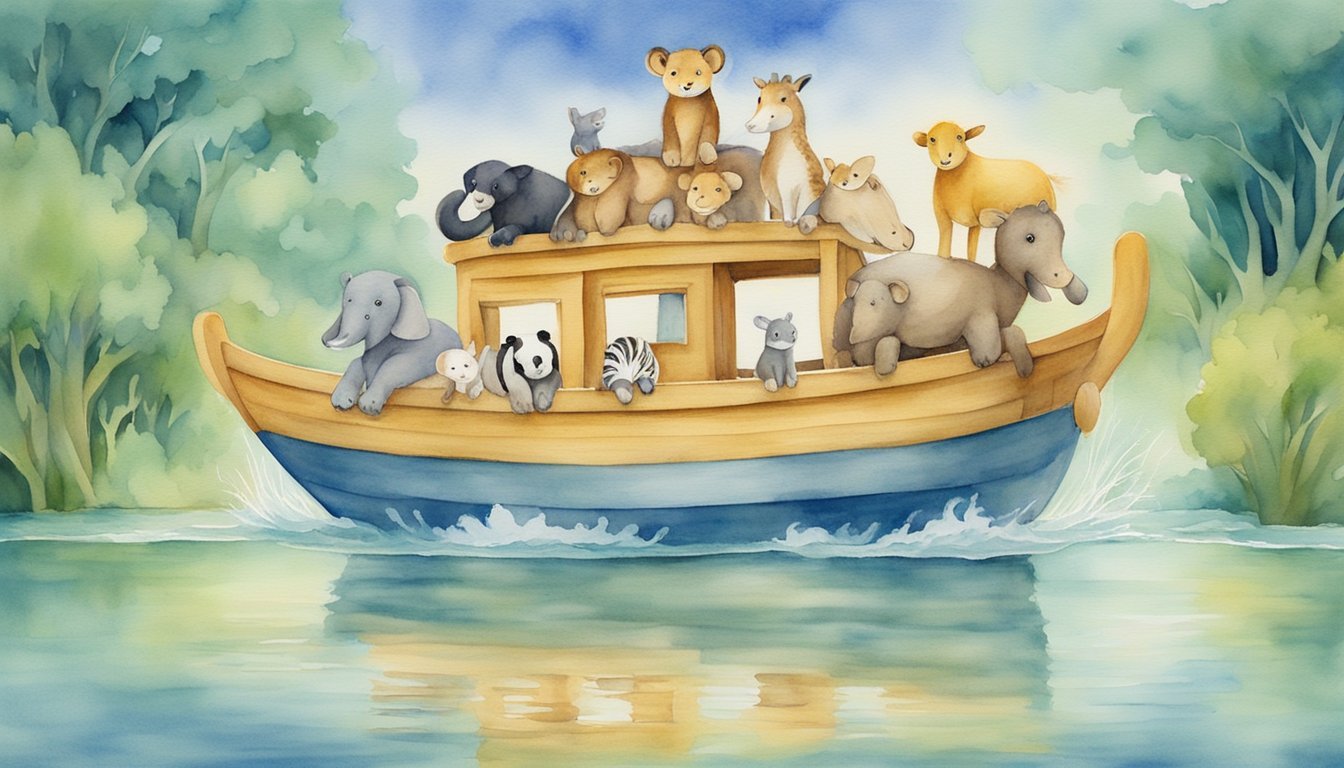Origins of Noah’s Ark
Biblical Account
The story of Noah’s Ark comes from the Hebrew Scriptures, specifically the book of Genesis in the Pentateuch, which is the first five books of the Torah. The Ark was built by Noah in response to God’s instructions to save his family and representatives of all the world’s animals from a great flood. This disastrous event was intended to cleanse the Earth of sinful humanity and begin anew with Noah and his family as the sole survivors. The Genesis flood narrative shares many elements with ancient, neighboring civilizations surrounding Israel, all of which carried a story of a universal flood sent by divine elements for various reasons.
Noah and His Family
According to the Bible, Noah was a righteous man chosen by God to build the Ark and preserve a portion of life on Earth. He and his wife, together with their three sons, Shem, Ham, and Japheth, and their wives, constituted the only human inhabitants on the Ark. The bible describes Noah as someone who “found favor with God” and “walked with God.”
The Torah’s account provides a detailed chronology of the events leading to the flood, the construction of the Ark, and the eventual subsiding of the waters. It includes dates and time periods, which paint a complete picture of the journey and challenges faced by Noah and his family.
God’s Covenant with Humanity
In the Genesis account, God established a covenant with Noah and his descendants, promising never to send another worldwide flood to destroy the Earth. As a sign of this covenant, God set a rainbow in the sky to remind both himself and humanity of His promise. This divine agreement highlights the significance of Noah’s Ark in demonstrating God’s mercy and the importance of righteousness in the face of rampant sin.
Through Noah’s Ark, God ensured the survival of humanity, and the story has become a symbol of God’s commitment to preserving life on Earth. Noah’s Ark not only symbolizes the destruction of sin but also serves as a reminder of the resilience of life and God’s unwavering faithfulness to those who strive to be righteous.
The Journey of the Ark

Constructing the Ark
Noah was instructed by God to build an ark made of gopher wood and coat it with pitch to make it waterproof. The ark’s dimensions were given in cubits: 300x50x30 cubits, which translates to approximately 450x75x45 feet. It consisted of three decks and various compartments to accommodate Noah’s family and the animals.
Collecting the Animals
Noah was tasked with gathering two of every kind of animal (one male and one female), and seven pairs of clean animals. This was to ensure their survival during the flood and repopulation of the Earth afterward. The animals had to be accompanied by sufficient food for their sustenance during the journey.
Surviving the Flood
The great flood began on Cheshvan 17 and lasted for 40 days and 40 nights. During this time, rain fell continuously, submerging the entire Earth. The ark floated on the waters, carrying its passengers safely. After the 40-day rain, the Earth’s waters continued to churn and swell for an additional 150 days before they began to subside.
Resting on Mount Ararat
The ark eventually rested on the Mountains of Ararat in modern-day Turkey. When the floodwaters finally receded, Noah sent out a raven and a dove to scout for dry land. The dove returned with an olive leaf, signaling the end of the flood.
Legacy and Cultural Impact
The story of Noah’s Ark has had a significant impact on various religions, including Christianity and Judaism. It has been seen as an example of God’s judgment on a sinful world and his providential care for those who remain faithful. The story has been retold through various forms of art, literature, and cultural expression. Even today, Noah’s Ark remains a symbol of hope, salvation, and assurance in times of judgment.

